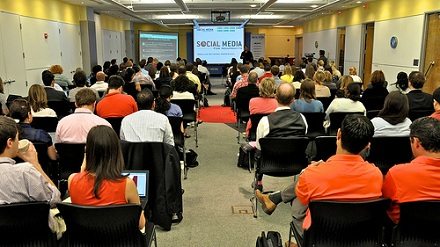
September 7, 2012; Source: Business 2 Community
Sign up for our free newsletters
Subscribe to NPQ's newsletters to have our top stories delivered directly to your inbox.
By signing up, you agree to our privacy policy and terms of use, and to receive messages from NPQ and our partners.
Social Media for Nonprofits has expanded its conference series from last year’s seven-city tour to twelve cities this year, including conferences in Canada and India. Only four conferences remain in 2012, and here are some social media tips nonprofits have been taking away from the series thus far:
- Facebook tips: Facebook expert and author John Haydon shared some tips for creating Facebook Pages that all organizations should take note of:
- Mornings and evenings are the optimum times to post.
- Users are more likely to click on a longer link than links generated using a URL shortener.
- Posts with less than 80 characters are shared the most.
- Take advantage of Facebook Insights to evaluate what works for your organization.
- Personalize messages. “When you have a person’s name, and a face, and a real identity, and an understanding of what they care about and who they are, there’s a much greater propensity to act,” Libby Leffler of Facebook said. “We believe that this real authentic identity on Facebook gives people an opportunity to act, to engage, and to understand a little bit more of what you (as a nonprofit) are doing.”
- The Cs of social media: The co-founder of the Social Media for Nonprofits Conference, Darian Rodriguez Heyman, spoke about how to create viral content through social media by using the Cs. That is, compelling, concise, consistent and credible (don’t make any promises you can’t keep!) content will create a contagious message that could reach millions through social media.
- “Social media is like exercise:” Darian Rodriguez Heyman made a clever connection between social media and exercising, in that:
- “You get what you put in;
- You get results with consistent effort; and
- [You shouldn’t] expect miracles to happen overnight.”
- Allow your social networking channels to convey one seamless message. Although there may be several staff members and social media outlets communicating different ideas, don’t confuse donors by lacking consistency. If you have a fundraising campaign occurring, keep one fluid message running through all social media channels.
Has your organization taken any social networking knowledge away from the 2012 Social Media for Nonprofits Conference that you think it would be helpful to share? –Aine Creedon













